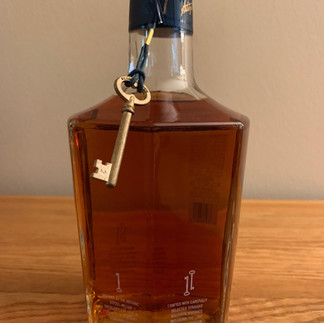Blade and Bow Bourbon
- Joseph Bourbon

- Jul 3, 2022
- 3 min read
Updated: Jul 5, 2022
The bourbon industry is a close knit family, with many families intertwined, such as the Beams and the Shapiras (Heaven Hill). While Blade and Bow is part of the Diageo family of spirits (makers of Bulleit), Blade and Bow Bourbon pays homage to the rich past of the Stitzel-Weller Distillery.

Honoring the Father of Modern Bourbon
A few years back, we toured the Bulleit Experience at Stizel-Weller Distillery - just south of downtown Louisville - in Shively, Kentucky. There, you can see much of the distillery that was once owned by Julian "Pappy" Van Winkle, Sr. and produced some of the finest bourbon in the land. His pioneering use of wheat as a flavoring grain instead of rye led others, such as Bill Samuels Sr. of Makers Mark to begin producing wheated bourbons.
Stitzel-Weller began operations in the Spring of 1935 and by 1947, Van Winkle had full control of operations. Passing to his son, Julian Van Winkle Jr. in 1965, the family business was forced to sell in 1972. In 1997, Diageo acquired the five-year vacant facility, and in 2014, re-opened the facility as Bulleit Experience at Stitzel-Weller Distillery.
On the doors of the old Stitzel-Weller Distillery hung five keys, each representing the five steps of crafting fine bourbon - grains, yeast, fermentation, distillation, and aging. Blade and Bow draws its name from those skeleton keys, as a skeleton key has two parts - the blade shaft and the ornate bow. In fact, in addition to the keys being displayed on the bottle label, the neck contains a small metal skeleton key - and there are five unique keys representing Pappy's original five keys that hung on the doors of his distillery.
The Tasting
Blade and Bow is bottled at 91 proof and does not contain an age statement, though it is generally thought to be around 6 years old. It is uniquely made utilizing the solera aging method. With this, some of the last bourbon produced at Stitzel-Weller is blended with other whiskies. Further, the barrels are never fully drained, ensuring at least some part of the oldest bourbon is always present (though I would think that over time, there is less and less of this former great whiskey available to add).
Eye: Amber.
Nose: Light, with honey, vanilla, along with apple and pear notes.
Palate: True to the nose with vanilla and apple, along with a splash of oak and spice. This is very pleasant and an easy sipper.
Finish: Medium with fruit and vanilla followed by an oak crescendo.
Overall: I'm divided when it comes to Blade and Bow. On one hand, it's a very pleasant bourbon and I enjoy knowing that I've had a sip (perhaps minuscule) of some of the original Stitzel-Weller bourbon. On the other hand, without that splash of long-gone spirits, this is perhaps just an ok, pleasant $50 bottle of bourbon.
I recall a philosophical discussion from a political science class in college where the professor raised the question, "If you removed a board from the original Mayflower, and replaced it with a new board each night, at what point would it stop being the Mayflower?" With removal of the first board? When there is no longer 50% of the original boards? Or when the last board is removed?
The point being, there is a finite amount of Pappy's fine product - at what point are we down to just a drop or two of it in a bottle? While I enjoy it, and enjoy the story, at $50 it's becoming a stretch to be seen as a value.







Comments